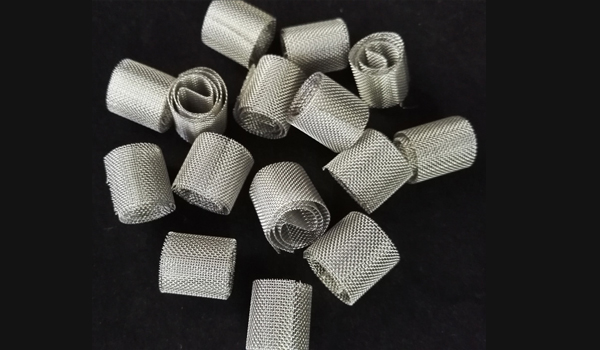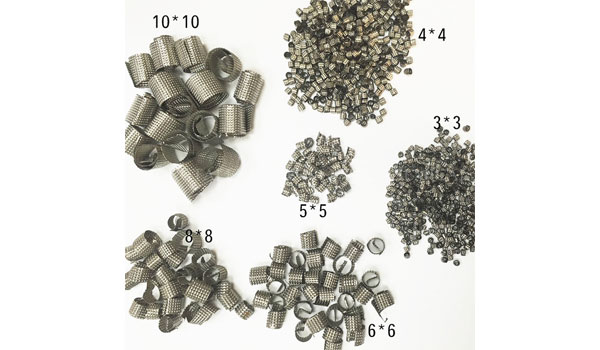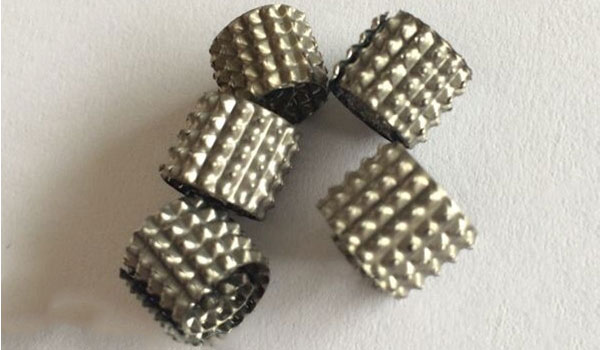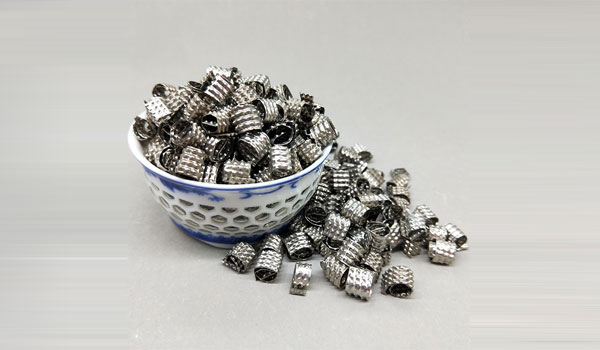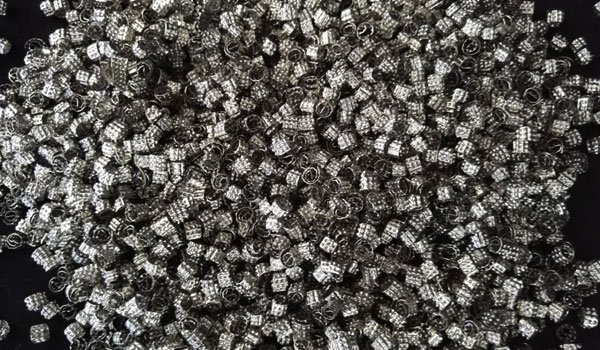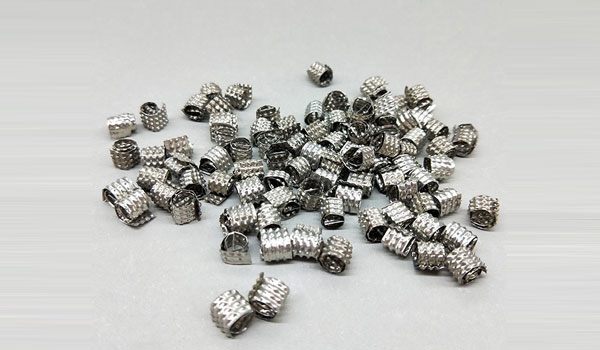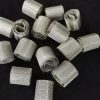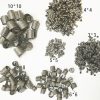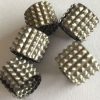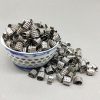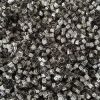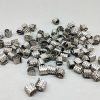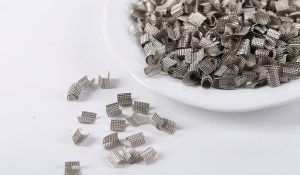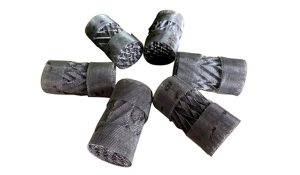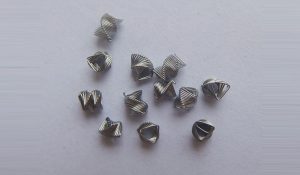Dixon Ring
Dixon Ring
Dixon ring was Originally designed by Dr George Olaf Dixon in 1946, it is a large development from Ceramic cross partition ring. Since it was born, Dixon ring was fine handmade, even after the automated process came up, the best quality Dixon ring is still fine handmade. The advantage of Dixon ring is high-efficiency mass transfer and extremely low-pressure drops.
描述
Overview of Dixon Ring
Also known as Dixon (Dixon) packing, is a small particle of efficient packing, made of wire mesh or piercing-hole plate, the diameter and height of the packing is equal, mainly used in the laboratory and small batch packing, high purity product separation process.
The pressure drop of refillers is related to factors such as gas velocity, liquid spray amount, the weight of the material system, surface tension, viscosity, and properties of the fillers, as well as being related to preflooding treatment of the fillers. The conditions of the following data are operated under full reflux, and the operating pressure is normal pressure for reference.
Φ 1.5 x 1.5 Φ pressure drop in the 13 mm Φ tower is 70 ~ 400 mmh2o/m (cresyl ethane)
Φ 2.5 x 2.5 in the 50 mm Φ tower pressure drop is 55 ~ 250 mmh2o/m (cresyl ethane)
Φ 4 x 4 pressure drop in the 50 mm Φ tower is 30 ~ 200 mmh2o/m (water)
In addition, the hysteresis amount of reorganizing ring fillers is larger than that of solid fillers of the same kind, indicating that the surface wetting of reorganizing rings is more complete than that of general porcelain rings, leading to higher film formation rate and higher efficiency. As for fillers with smaller diameter, this is more obvious.
As the diameter of the tower increases, the number of theoretical plates decreases greatly(HETP = 0.8 ~ 1.2dr in Dr/d>10 but packing efficiency decreases significantly in Dr/d>70). The number of theoretical plates increases as gas velocity increases, but decreases as surface wetting rate decreases.15.
My company produces fillers for a single layer of silkscreen.
Parameters of Dixon Ring
| Specifications | Mesh | Tower Diameter (mm) | Theoretical Plate Number/m | Packing Density (kg/m3) | Porosity (%) | Pressure Ratio (mbar/m) |
| θ2X2 | 100 | θ10-θ35 | 60-65 | 670 | 91 | 30 |
| θ3×3 | 100 | θ20-θ50 | 50-55 | 520 | 93 | 15 |
| θ4×4 | 100 | θ20-θ70 | 30-32 | 380 | 95 | 10 |
| θ5×5 | 100 | θ20-θ100 | 15-20 | 295 | 95 | 10 |
| θ6×6 | 80 | θ20-θ150 | 12-15 | 280 | 95 | 10 |
| θ7×7 | 80 | θ20-θ200 | 14-17 | 265 | 95 | 8 |
| θ8×8 | 80 | θ20-θ250 | 10-12 | 235 | 95 | 8 |
| θ10×10 | 80 | θ20-θ300 | 7-8 | 200 | 95 | 8 |

